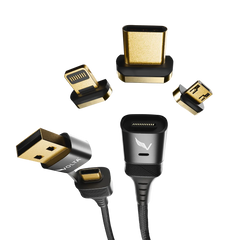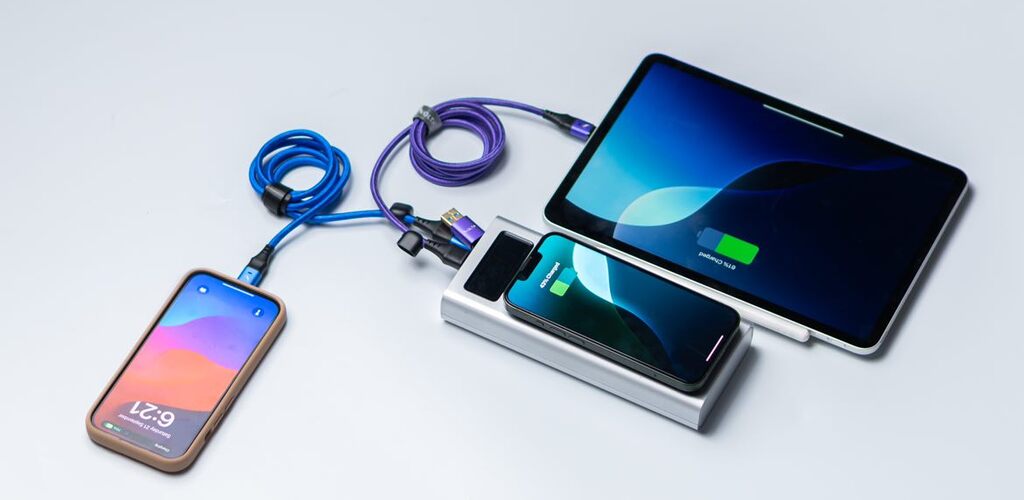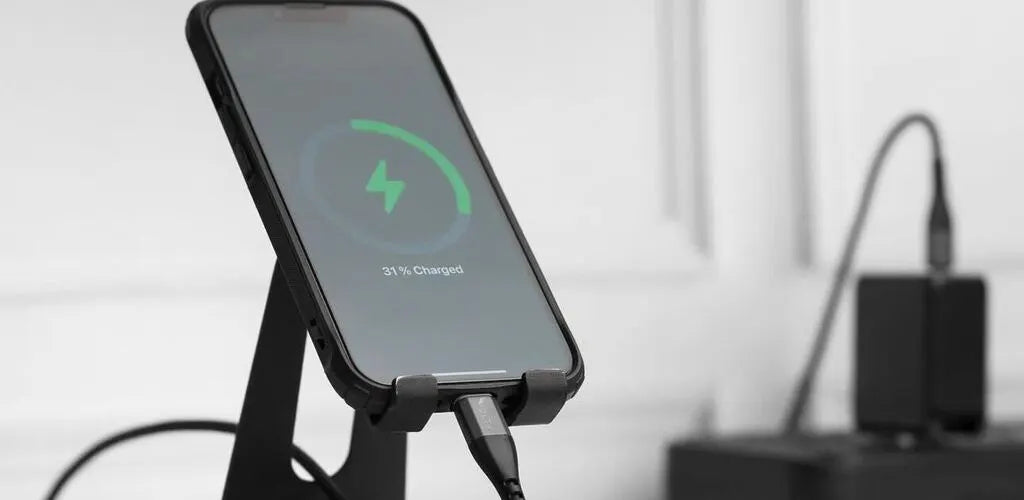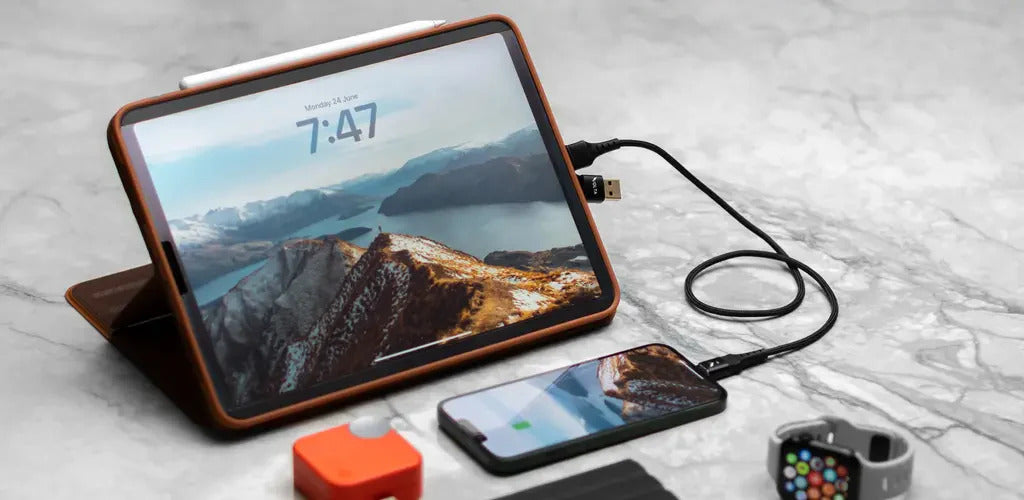Have you ever been confused by all those fancy words like "USB-C" and "Fast Charging" when you're just trying to charge your phone? It happens to the best of us, especially if you're not a tech expert.
Imagine this: You buy a new phone, and it comes with a cable that claims to be "USB-C" and promises "Fast Charging." Or you get a "Fast Charging" cable like the Volta Max...
$50.00
$0.00
✅
Easy
Magnetic
Connection
✅
Snap
to
Charge
Your
Phone,
Laptop,
and
More
✅
Charges
ALL
Apple
Lightning,
USB-C
&
Micro
USB
Devices
✅
Supports
...

Volta MAX - 240W USB-C Magnetic Charging Cable
What do these words even mean? How do they affect your daily life?
Well, don't worry! In this blog post, we're going to help you make sense of all this tech talk. We'll break down 25 essential charging terms into simple, easy-to-understand explanations. Whether you're a tech guru or someone who just wants to charge their gadgets without confusion, this guide is for you.
Think of it as your map through the world of charging technology. We're here to make it less complicated and more accessible. By the end of this journey, you'll be a pro at understanding these terms, and charging your devices will be a piece of cake. Whether you're plugging in your phone or setting up a wireless charger, we've got you covered. Let's dive in!
- GaN (Gallium Nitride): Power Efficiency Pioneer. GaN chargers are known for their compact size and impressive power efficiency. They offer faster charging in a smaller package.
- Fast Charging: Refers to technology that allows devices to charge at a higher rate than standard charging methods, often using higher voltage or current.
- Wireless Charging: The process of charging a device without using physical cables, typically through electromagnetic fields.
- USB(Universal Serial Bus)-C: A versatile and reversible USB connector that has become a standard for charging many devices due to its high-speed data transfer and power delivery capabilities.
- Power Delivery (PD): A charging protocol that allows for faster and more efficient charging by dynamically adjusting voltage and current levels.
- Quick Charge: Qualcomm's fast charging technology commonly used in Android devices to charge at a rapid rate.
- Ampere (Amp): A unit of measurement for electric current, which determines the rate at which electrical charge flows.
- Voltage (Volt): A measure of electrical potential difference, which influences the speed and efficiency of charging.
- mAh (Milliampere-hour): A unit of measurement for battery capacity, indicating how much charge a battery can hold.
- Battery Management System (BMS): A system that monitors and controls the charging and discharging of a battery to optimize performance and safety.
- Inductive Charging: A wireless charging method that uses electromagnetic fields to transfer energy between two coils, typically found in Qi wireless charging systems.
- USB Power Delivery (USB-PD): A universal fast charging standard that can deliver higher power levels over USB connections.
- Charging Dock: A device used to charge multiple devices simultaneously, often equipped with multiple USB ports or wireless charging pads.
- Charge Cycle: One complete charge and discharge of a rechargeable battery, which affects the overall lifespan of the battery.
- Adapter: A device that converts the power from a wall outlet into the appropriate voltage and current for a specific device's charging needs.
- Battery Optimization: Software or hardware features that help extend the lifespan of a battery by managing charging and power consumption.
- Overcurrent Protection: Circuitry or technology designed to prevent excessive current from damaging devices during charging
- Charging Protocol: A set of rules and standards that govern how a device communicates with a charger to negotiate the optimal charging parameters, such as voltage and current.
- Battery Health: Refers to the overall condition and capacity of a rechargeable battery, often monitored by devices to ensure optimal charging practices and extend the battery's lifespan.
- Trickle Charging: A slow and continuous charging method used to keep a battery at its full capacity, typically used in devices like some cordless phones or maintaining the charge in certain automotive batteries.
- Charging Port: The physical interface on a device where a charging cable or connector is inserted for recharging.
- Battery Calibration: The process of resetting a device's battery status to accurately reflect its actual capacity, which can help improve battery life and charging accuracy.
- USB OTG (On-The-Go): A feature that allows certain devices to act as a host for connecting other USB devices, including charging other devices via USB.
- Charging Station: A centralized location or device with multiple charging ports or pads for charging multiple devices simultaneously.
- Charging Efficiency: A measurement of how effectively a device converts electrical power from a charger into usable energy for the battery, often expressed as a percentage.
Real-World Examples
To make these tech terms more relatable, let's consider some real-world examples:
Imagine you're about to charge your smartphone. You pick up your trusty USB-C cable and plug it into your device's charging port, which is equipped with a Battery Management System (BMS) to keep your battery healthy. Your phone's Battery Health is at its peak, thanks to careful Battery Calibration.
As you plug it in, the charger's Power Delivery (PD) technology detects your device and starts Fast Charging it. This means you'll get a quick and efficient charge, all while avoiding overcurrent issues, thanks to Overcurrent Protection.
If you're using a wireless charging pad, you're benefiting from Inductive Charging, where electromagnetic fields invisibly transfer energy to your device.
And while your device charges, you can check its Battery Health to ensure it stays fit and ready for your next adventure.
Conclusion
We hope this guide has juiced up your vocabulary and given you a better understanding of the charging tech jargons that power your devices. From USB-C to Battery Health, these terms are your keys to a safer and more efficient charging experience. So, go ahead, charge up your knowledge, and remember, understanding these terms can help you make the most out of your tech gadgets while keeping them in top shape.
If you found this post helpful, consider sharing it with friends and family who might also benefit from understanding these charging tech jargons. Subscribe to our blog for more tech insights, and feel free to ask any questions or share your thoughts in the comments section below.



Leave a comment
This site is protected by hCaptcha and the hCaptcha Privacy Policy and Terms of Service apply.